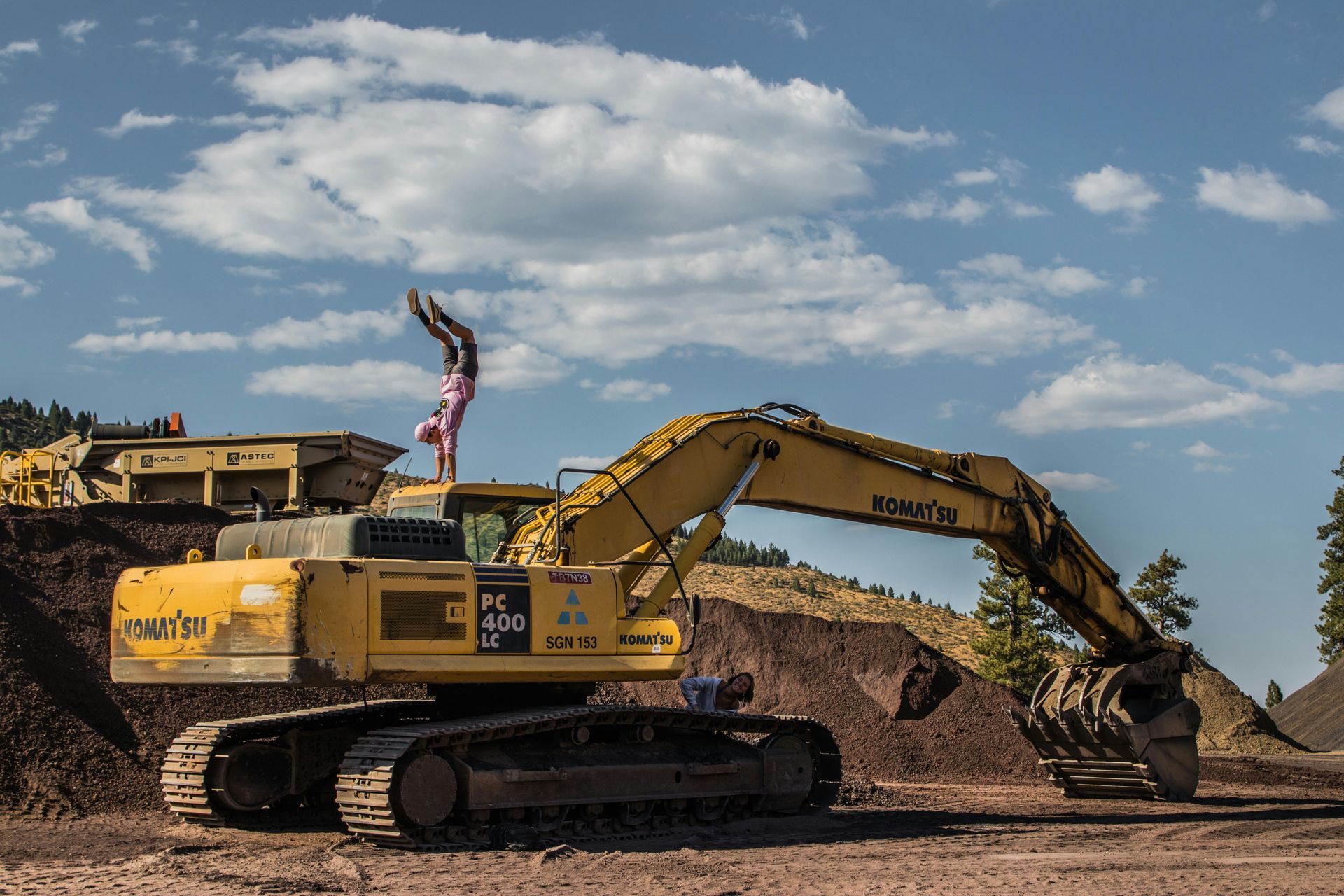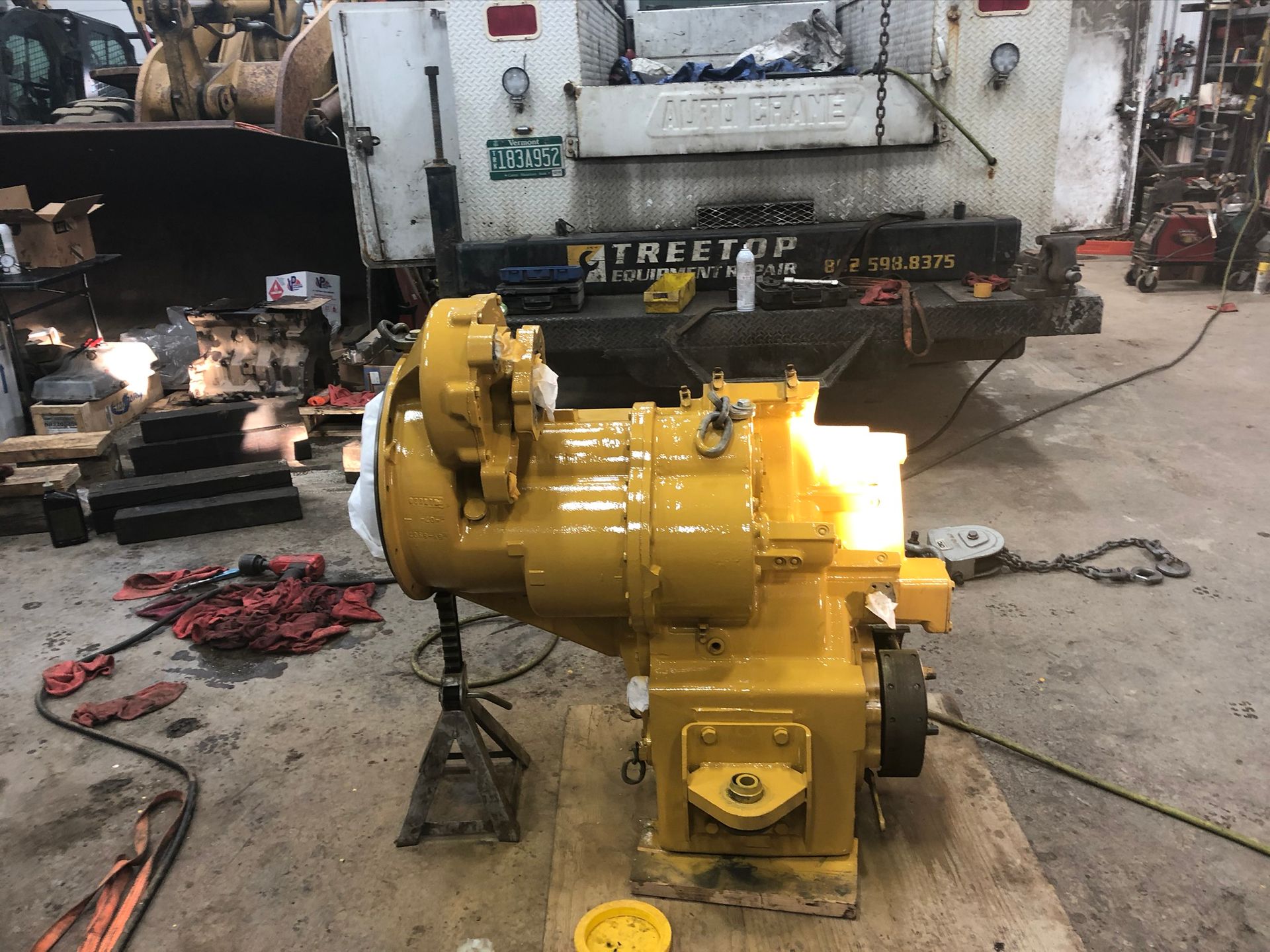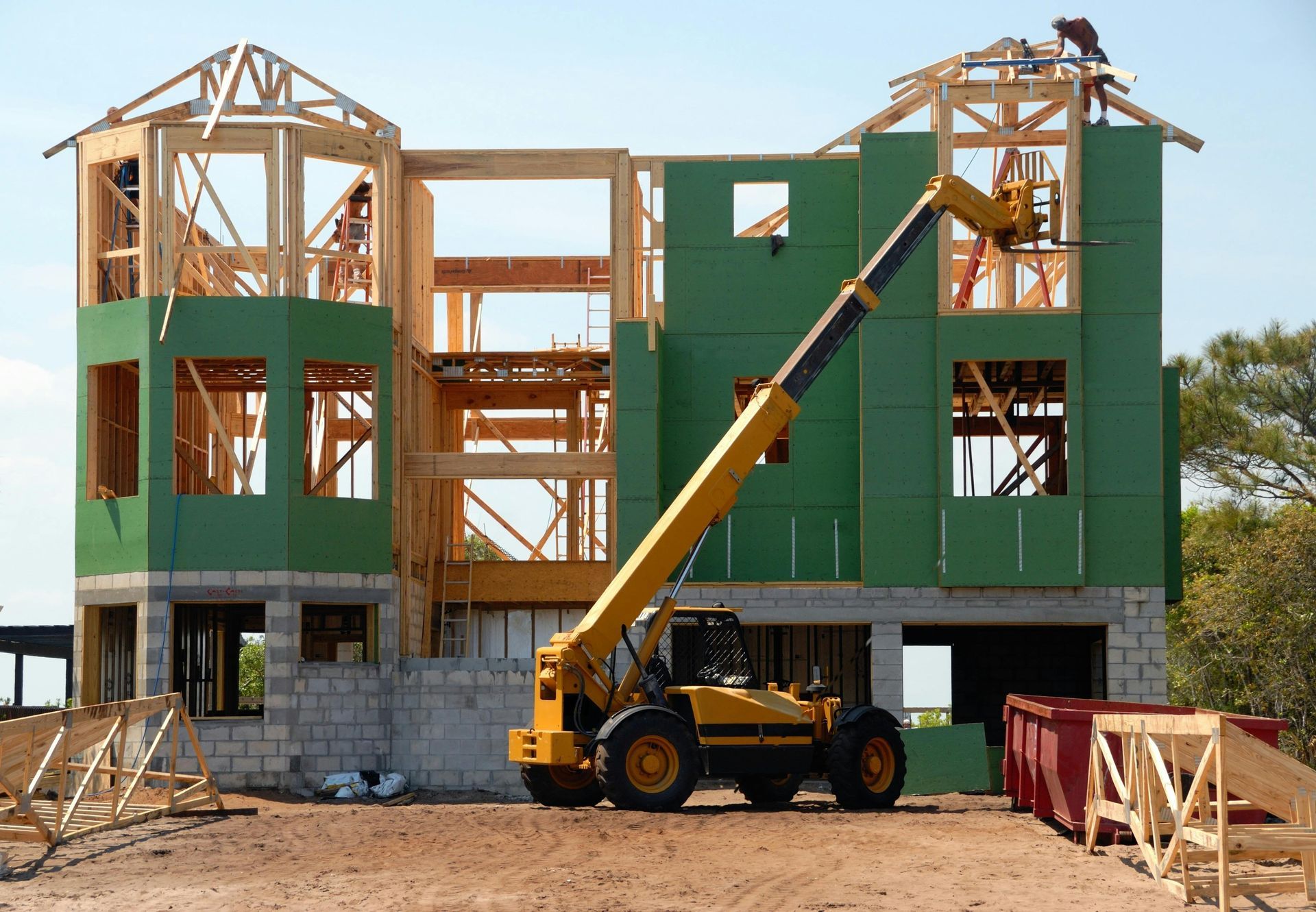What Are the Most Common Problems with Heavy Equipment?

Top 10 Heavy Equipment Problems: Warning Signs & Solutions
Heavy equipment is the backbone of construction, forestry, and farming operations. When these machines break down, projects stop, deadlines slip, and costs rise. Knowing what can go wrong helps you spot issues early.
The most common heavy equipment problems include hydraulic system failures, engine issues, electrical faults, transmission problems, undercarriage wear, cooling system failures, and structural damage. Each problem has its own warning signs and solutions.
Regular checks and quick fixes can save you thousands of dollars and many days of downtime. This guide will help you spot trouble before it becomes a major breakdown and show you how to fix or prevent the most common heavy equipment problems.
Understanding Heavy Equipment Problems
Why Equipment Failures Happen
Heavy equipment works in tough conditions. Dirt, heat, cold, rain, and constant stress take a toll on even the best-built machines. Problems happen for many reasons:
- Normal wear and tear from regular use
- Improper operation by untrained workers
- Lack of regular maintenance or skipped service
- Using low-quality parts or fluids
- Environmental factors like extreme temperatures
- Age-related breakdowns in older equipment
Most failures don't happen suddenly. They give warning signs first, but these are often missed until a complete breakdown occurs.
The Cost of Equipment Downtime
When heavy equipment stops working, the costs add up fast:
- Direct repair costs for parts and labor
- Lost productivity while equipment sits idle
- Project delays and missed deadlines
- Rental costs for replacement equipment
- Overtime wages to catch up on work
- Damaged reputation with clients
Studies show that the average downtime cost for heavy construction equipment is $500-$1,000 per hour. For larger operations, this can reach $3,000 or more per hour.
Hydraulic System Problems
Signs of Hydraulic Failure
Hydraulic problems are the most common issue in heavy equipment. Watch for these warning signs:
- Slow or jerky movement of booms, buckets, or attachments
- Unusual noises like whining, knocking, or banging
- Overheating hydraulic fluid (hot to touch reservoirs)
- Visible leaks under the machine or around fittings
- Loss of power during lifting or pushing operations
- Cloudy or dark hydraulic fluid (should be clear or amber)
These symptoms often appear gradually, getting worse over time before complete failure.
Common Hydraulic System Issues
Five hydraulic problems account for most service calls:
- Hydraulic leaks - The most visible issue, causing fluid loss and performance drops. Check hoses, fittings, cylinders, and pumps for wet spots or drips.
- Contaminated fluid - Dirt particles cause most hydraulic failures. When debris enters the system, it damages seals, valves, and pumps.
- Pump failures - The heart of the hydraulic system, pumps fail from contamination, cavitation (air bubbles), or overheating.
- Cylinder damage - Bent rods, scored barrels, or leaking seals reduce power and control.
- Valve problems - Sticky, leaking, or clogged valves cause erratic movement and power loss.
Hydraulic System Maintenance Tips
Prevent hydraulic problems with these key practices:
- Change hydraulic filters according to the manual, not just when they look dirty
- Replace hydraulic fluid at recommended intervals
- Keep fluid clean by using filtered filling equipment
- Check for leaks daily and repair them promptly
- Maintain proper fluid levels in the reservoir
- Keep cylinders protected from impact damage
- Clean fittings before disconnecting hoses
Regular fluid analysis costs about $25 per sample but can prevent $5,000+ in repairs.
Engine and Power System Issues
Warning Signs of Engine Problems
Watch for these signs of engine trouble:
- Black, blue, or white exhaust smoke
- Unusual engine noises like knocking or rattling
- Reduced power or difficulty handling normal loads
- Hard starting or failure to start
- Warning lights on the dashboard
- Increased fuel consumption
- Fluid leaks under the engine
Different colored smoke tells you different things:
- Black smoke = too much fuel or not enough air
- Blue smoke = burning oil
- White smoke = coolant in the combustion chamber
Diesel Engine Troubleshooting
Common diesel engine problems include:
- Fuel system issues - Clogged filters, bad fuel, or air in the fuel lines prevent proper combustion.
- Air intake restrictions - Dirty air filters reduce power and increase fuel use.
- Injector problems - Worn or clogged injectors cause rough running and power loss.
- Turbocharger failures - Listen for whistling noises or look for oil leaks from the turbo.
- Compression problems - Worn rings or valves reduce engine power and efficiency.
- Cooling system failures - Overheating damages engine components and shortens engine life.
Power System Maintenance
Keep your engine running strong with these steps:
- Check fluid levels daily (oil, coolant, fuel)
- Replace air filters regularly and more often in dusty conditions
- Change oil and filters according to the manufacturer's schedule
- Clean fuel filters and water separators
- Test cooling system for proper function
- Inspect belts and hoses for wear or damage
- Monitor gauges during operation
Many engine problems start small and get worse. Fixing minor issues early prevents major breakdowns later.
Electrical System Failures
Symptoms of Electrical Problems
Electrical issues can be tricky to diagnose. Look for these signs:
- Difficulty starting the machine
- Gauge problems or warning lights
- Dim or flickering lights
- Intermittent failures of components
- Tripped breakers or blown fuses
- Battery draining when the machine is off
- Burning smells from electrical components
Electrical problems often get worse when equipment gets wet or in extreme temperatures.
Common Causes of Electrical Failures
Five electrical issues cause most problems:
- Battery failures - Dead cells, corrosion, or loose connections prevent proper starting.
- Alternator problems - Failed alternators don't recharge batteries during operation.
- Damaged wiring - Crushed or cut wires, often hidden in harnesses, cause intermittent issues.
- Corroded connections - Rust and corrosion increase resistance and heat, leading to failures.
- Failed sensors - Modern equipment relies on many sensors that can fail and trigger fault codes.
Preventing Electrical System Issues
Protect your electrical system with these practices:
- Clean battery terminals and check connections monthly
- Test battery condition with a multimeter
- Inspect wiring harnesses for damage or wear
- Seal electrical connections properly
- Keep components dry when possible
- Check alternator output periodically
- Use the right fuse ratings when replacing blown fuses
Carry a portable jump starter on remote job sites to avoid downtime from dead batteries.
Transmission and Drivetrain Problems
Signs of Transmission Trouble
Transmission issues affect movement and power transfer. Watch for:
- Delayed or rough shifting
- Slipping gears or unexpected neutral shifts
- Strange noises when changing direction or speed
- Overheating transmission (hot case)
- Leaks under the transmission area
- Warning lights for transmission problems
- Loss of power when under load
A properly working transmission should shift smoothly without jerking or hesitation.
Common Drivetrain Issues
These problems affect how power moves from engine to wheels or tracks:
- Low fluid levels - Causes overheating and inadequate lubrication
- Contaminated fluid - Metal particles indicate internal damage
- Clutch failures - Worn clutches slip under load
- Bearing failures - Listen for unusual noises when turning or moving
- Shaft damage - Broken axles or drive shafts happen under extreme loads
- Seal leaks - Allow fluid to escape and contaminants to enter
Maintaining Your Transmission System
Keep your transmission healthy with these steps:
- Check fluid levels regularly
- Change transmission fluid at recommended intervals
- Inspect for leaks around seals and gaskets
- Avoid overloading the equipment
- Allow warm-up time before operation
- Keep cooling systems working properly
- Train operators on proper shifting techniques
Transmission repairs are costly. Prevention through maintenance saves money in the long run.
Undercarriage and Track Issues
Recognizing Undercarriage Problems
For tracked equipment, the undercarriage can account for 50% of maintenance costs. Watch for:
- Excessive track sag or tightness
- Uneven wear on track components
- Unusual noise during travel
- Thrown or broken tracks
- Leaking track rollers or idlers
- Difficulty steering or track alignment problems
- Visible damage to track components
Wheeled equipment has its own issues, including tire wear, rim damage, and axle problems.
Track and Tire Maintenance
Extend track and tire life with these practices:
- Check track tension daily
- Rotate direction of travel when possible
- Clean undercarriage regularly
- Inspect for loose bolts or missing hardware
- Check for leaking seals on rollers and idlers
- Monitor tire pressure on wheeled equipment
- Look for cuts or damage to tires
Proper track tension is critical. Too tight causes rapid wear, while too loose leads to thrown tracks.
Extending Undercarriage Life
These practices reduce wear and extend component life:
- Minimize operation on slopes when possible
- Avoid spinning tracks on hard surfaces
- Use three-point turns instead of counter-rotation
- Choose appropriate tracks for your conditions
- Train operators on proper turning techniques
- Keep material out of undercarriage with regular cleaning
A complete undercarriage rebuild can cost $15,000-$50,000 depending on machine size. Good maintenance practices extend component life by 20-50%.
Cooling System Failures
Overheating Warning Signs
Overheating damages engines and hydraulic systems. Watch for:
- High temperature gauge readings
- Warning lights or alarms
- Visible steam from the engine area
- Loss of power during operation
- Hot surfaces that normally stay cooler
- Sweet smell (indicating coolant leaks)
- White exhaust smoke (if coolant enters combustion chambers)
Never continue operating an overheating machine, as serious damage can occur quickly.
Common Cooling System Problems
These issues cause most cooling system failures:
- Radiator restrictions - Clogged fins reduce airflow and heat transfer
- Low coolant levels - Air pockets prevent proper cooling
- Failed water pumps - Reduced circulation causes hot spots
- Thermostat failures - Stuck thermostats prevent proper temperature regulation
- Fan problems - Broken blades or drive belts reduce airflow
- Coolant leaks - Allow coolant to escape and air to enter the system
Keeping Your Cooling System Efficient
Maintain your cooling system with these practices:
- Check coolant levels daily
- Pressure test the system annually
- Clean radiator fins regularly
- Test coolant condition and strength
- Inspect belts for proper tension
- Look for leaks at hoses and connections
- Ensure fans work properly
In dusty conditions, clean radiators more frequently. A single layer of dust can reduce cooling efficiency by 40%.
Structural and Mechanical Failures
Spotting Structural Damage
Frames, booms, and attachments can develop cracks and failures:
- Look for visible cracks or bent components
- Check for loose fasteners or missing bolts
- Inspect welds for cracks or separation
- Watch for unusual movement in normally rigid parts
- Look for fresh paint that might hide repairs
- Check alignment of frames and components
- Inspect mounting points for attachments
Small cracks often appear before complete failures. Finding them early prevents accidents and costly repairs.
Preventing Mechanical Breakdowns
Common mechanical issues include:
- Bearing failures - Listen for unusual noises or look for excessive heat
- Broken pins and bushings - Cause play in attachments and linkages
- Worn cutting edges - Reduce efficiency and increase power requirements
- Broken teeth or bucket damage - Affects digging performance
- Failed seals - Allow contamination and fluid loss
Regular greasing and inspection prevents many mechanical problems before they start.
Extending Equipment Life
These practices help your equipment last longer:
- Follow proper break-in procedures for new equipment
- Train operators on proper techniques
- Don't overload the machine
- Repair minor damage before it becomes major
- Use OEM or high-quality parts for repairs
- Keep detailed maintenance records
- Follow manufacturer recommendations for service intervals
Equipment that's well maintained can last 2-3 times longer than neglected machines.
Equipment-Specific Common Problems
Excavator-Specific Issues
Excavators face unique challenges:
- Slew ring damage - Caused by improper greasing or overloading
- Boom cylinder failures - Often from overloading or impact
- Bucket teeth wear - Reduces digging efficiency
- Swing motor issues - Affect rotation speed and control
- Quick coupler failures - Can cause dangerous attachment drops
Daily checks of pins, bushings, and hydraulic connections prevent many excavator problems.
Bulldozer Common Problems
Bulldozers commonly experience:
- Blade wear - Reduces cutting efficiency
- Control linkage issues - Affect precision operation
- Track alignment problems - Cause uneven wear and steering issues
- Ripper shank damage - From hitting rocks or hidden objects
- Final drive failures - Very expensive to repair
Proper operation techniques, especially when backing up or turning, extend track and drivetrain life.
Loader and Backhoe Failures
These versatile machines often have:
- Bucket cylinder leaks - From seal damage
- Stabilizer issues - Affecting machine stability
- Steering cylinder problems - Making control difficult
- Boom wear - From constant lifting and lowering
- Tire damage - From rough terrain or debris
Check hydraulic cylinders daily for leaks or damage, especially where dirt and debris collect.
Forestry Equipment Challenges
Forestry machines face extreme conditions:
- Saw head damage - From hitting rocks or metal objects
- Feed roller issues - Affecting material handling
- Articulation joint wear - From constant turning in rough terrain
- Boom stress cracks - From overloading or impact
- Hydraulic hose failures - From branch damage or rubbing
Extra protection for hoses and components extends life in harsh forest conditions.
Preventative Maintenance: The Key to Problem Prevention
Creating a Maintenance Schedule
A good maintenance plan includes:
- Daily inspections before startup
- Weekly checks of less critical systems
- Monthly deep inspections of all components
- Seasonal preparation for changing conditions
- Annual overhauls of major systems
Use equipment hour meters, not calendar days, to schedule service. Modern telematics systems can automate maintenance tracking.
Operator Training to Prevent Problems
Well-trained operators help equipment last longer:
- Teach proper startup and shutdown procedures
- Train on warning signs to watch for
- Demonstrate proper operation techniques
- Explain machine limitations to prevent overloading
- Establish clean machine policies
- Create operator daily checklist responsibilities
Operators are your first line of defense against equipment problems. They notice changes in sound, performance, and feel before anyone else.
When to Call in Professional Help
Know when DIY isn't enough:
- Diagnostic trouble codes you can't solve
- Hydraulic system contamination
- Engine internal problems
- Electrical system failures
- Transmission or drivetrain issues
- Structural cracks or damage
Good service providers use diagnostic tools, factory training, and specialized equipment to fix problems right the first time.
Extending Heavy Equipment Life Through Problem Prevention
Heavy equipment problems don't have to derail your project or blow your budget. By knowing what commonly goes wrong, watching for warning signs, and taking quick action, you can keep your machines running longer with fewer breakdowns.
Remember that most major failures start as minor issues. The key is catching them early through regular inspections, proper operation, and scheduled maintenance. When problems do occur, address them quickly before they grow into expensive repairs or dangerous situations.
With good maintenance practices, quality parts, and trained operators, you can extend equipment life and reduce operating costs substantially over time.
Keep Your Heavy Equipment Running Strong
Don't let equipment problems stop your progress. Tree Top Equipment Repair specializes in diagnosing and fixing the most common heavy equipment issues before they become costly breakdowns.
Our expert team handles construction, forestry, truck, and agricultural equipment with factory-trained technicians and state-of-the-art diagnostic tools. We offer:
- Comprehensive equipment inspections
- Emergency repair services
- Preventative maintenance programs
- Operator training for problem prevention
- Quality parts and workmanship
Call Tree Top Equipment Repair today for a free equipment assessment and discover how our preventative approach can reduce downtime and extend the life of your valuable machinery.
Our Services
Contact Information
Phone:
Address:
113 Maple Ridge Ln, Huntington, VT 05462, United States of America
Business Hours
- Mon - Fri
- -
- Sat - Sun
- Closed
Tips & Articles
© 2025 All Rights Reserved | Mitch's Autoworks | Privacy Policy


